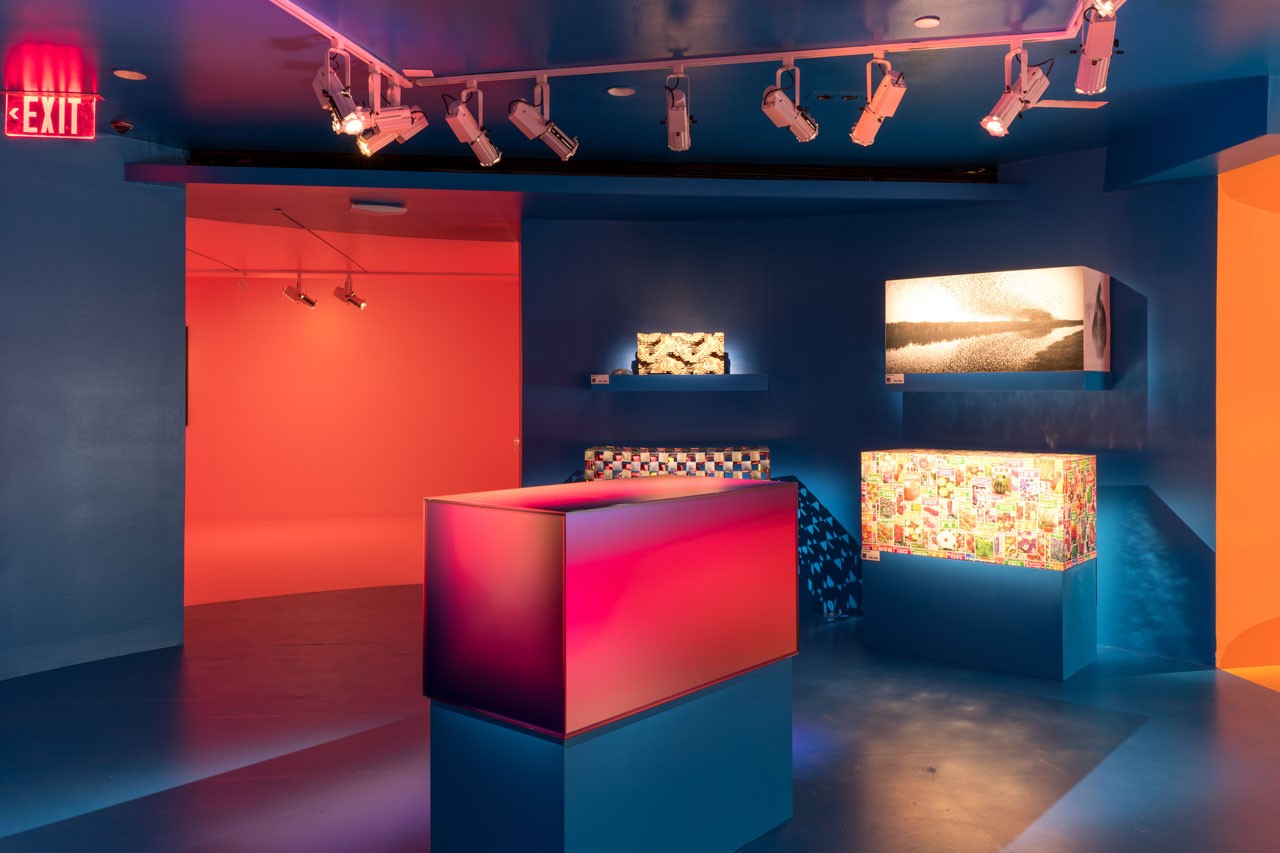“This is it: it’s really happening.”
It was 2016, BHS on Oxford Street had just closed, and I had this sudden realisation.
BHS, in case you’re not British and never got dragged round one as a child, was a clothing store. It had been around for 88 years. And now, it was making way for one of the signposts to the future, a genius and pioneering example of competitive socialising called Swingers.
Given that in 2013 I had stuck my neck out and self-published a book heralding the sunset of materialism and sunrise of experientialism, I felt this proved my point.
Humans have always gathered, whether around the campfire or the forum. In recent decades, our gathering places have been our high streets, main streets and malls.
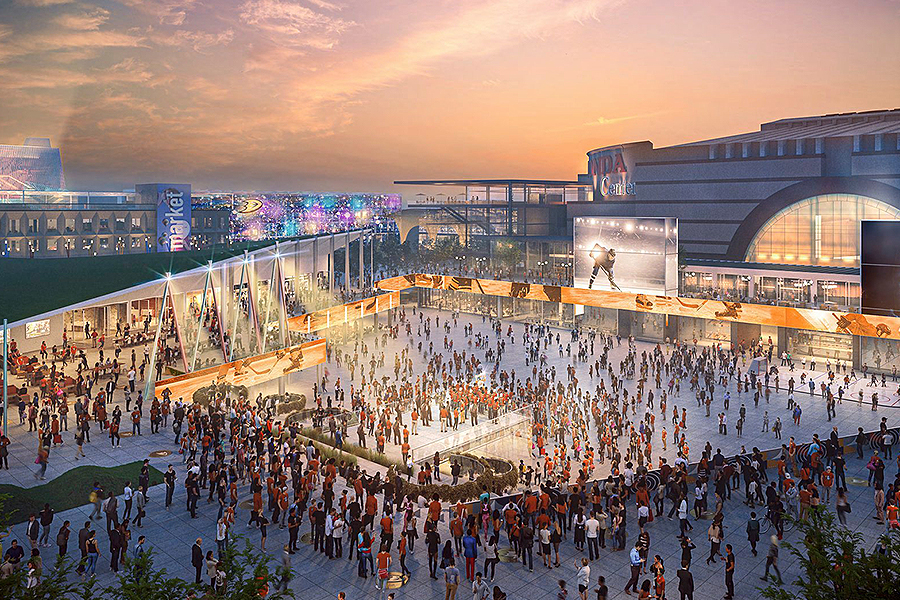
However, as trends such as online shopping, working from home, virtual meetings, food delivery and the home as entertainment centre have boomed – accelerated in no small part by the pandemic – these spaces have fallen into decline.
According to a recent report by Yahoo!, there are currently only 700 malls left in the US compared to 2,500 in the 1980s, and may only be a mere 150 left in 10 years’ time. Hence the sad fate of BHS.
The good news, of course, is that since then we’ve seen many examples of experiences replacing the material, as well as purveyors of experiences rising while shops close left, right and all along Main Street and the High Street.
Where we used to gather for stuff (malls), then stuff + food (malls with restaurants), now we gather for stuff + experiences. As retailers have woken up to this reality, “experiential retail” has risen from the ashes of the malls of the past.
But it wasn’t until I was leading a panel on the Future of Experiential Retail with Westfield, a leading shopping district in the UK, that I realised there was a gap in my thinking on the subject. I was hailing Winston Fisher’s AREA15 as THE pioneer in experiential retail.
“But that’s not retail,” said Grace Charge, Westfield’s Head of Brand Experience and Partnerships, Europe.
Of course, Westfield is a stage for all sorts of experiences. They’ve hosted ILMxLAB, Lucasfilm’s immersive entertainment studio. They created an under-the-sea cocktail bar that guests paddled to through an actual waterfall with Bompas & Parr. And they recently welcomed METRIX, a high-tech football pop-up merging the physical and digital.

These are smart ideas – according to PSFK’s Future of Retail 2018 report, 85% of consumers are more likely to purchase after participating in events and experiences.
Grace mentioned lots of other examples of what some may call “experiential marketing”, but which I’d probably just call “sampling”, i.e. a car parked in the middle of a shopping centre.
Perhaps to some, experiential marketing can run the gamut from non-billboard out-of-home advertising to what those of us in the Experience Economy think of as story-led, engaging experiences.
But Grace made me wonder… what’s the difference between those retail destinations that are custom built for experiences, like AREA15, and retailers that use experiences to lure customers off their sofas and into their stores?
I think there are two types of experiential retail:
- More-Than-A-Store Experiential Retail: these work by enticing people in using experiences, then selling them stuff, or merch.
- Experience Districts: these are the 21st century’s answer to the malls of the 20th century. People gather here not to buy stuff, but to have experiences.
The key difference is that in More-Than-A-Store Experiential Retail, experiences are the lure for the product. In Experience Districts, experiences are the product.
Examples Of More-Than-A-Store Experiential Retail
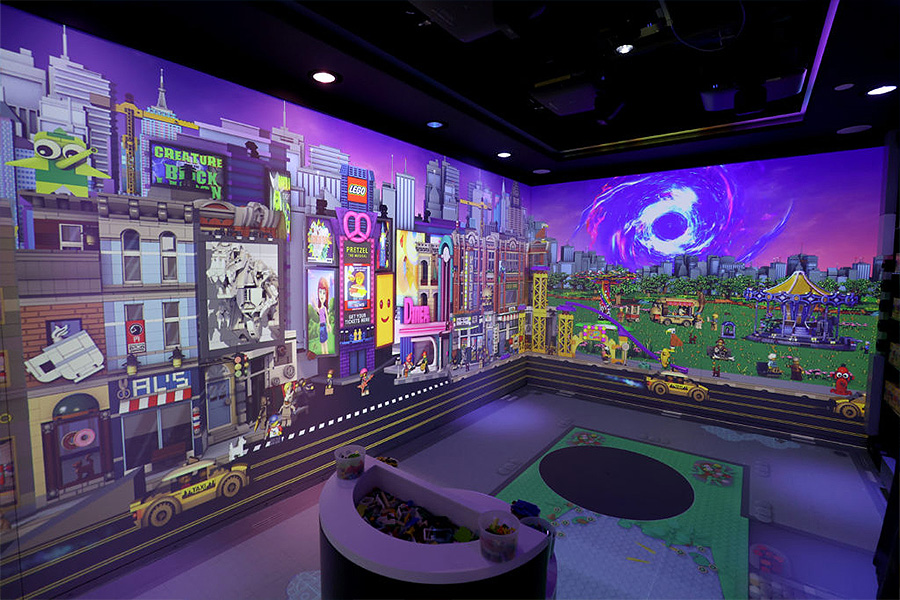
Retail, like work, used to be a place you go. But then along came the internet, and we started to shop from home.
Ever since George Collings and I, when we worked at a company called The Future Laboratory, advised BMW on the Future of Retail back in 2007, we worried that in a connected world, you have to offer a reason for people to move themselves physically and spend time with your brand.
Then, as Starbucks has shown, the more time you spend, the more money you spend.
Brands don’t want to sell stuff anymore. They’re even moving beyond services to sell experiences and transformations, becoming “experience brands”.
Take the athleisure brand Lululemon remarketing itself as an “experience company” and investing $300m a year on in-store wellness events.
The British department store Selfridges declaring its intention to sell less stuff by 2030.
Or John Lewis, middle England’s favourite retailer, hailing the start of the “moments economy” and introducing an Experience Desk at its flagship store.

Other examples of More-Than-A-Store Experiential Retail I’ve noticed include:
- Disney Encanto x CAMP: billed as “the world’s first immersive Disney Encanto experience”, this recreation of the world of the movie in NYC features secret passages, interactive magic, live music – oh, and a “town square… where all kinds of merchants have cooked up custom-made, exclusive goods inspired by the world of Encanto”.
- Netflix at The Grove: an “immersive 10,000-square-foot shopping extravaganza”opening just in time for the holiday season in LA, where visitors can buy products from Netflix smash hits including Stranger Things, Bridgerton and Squid Game, as well as take part in interactive photo opportunities and other as yet unannounced immersive events.
- The Harry Potter Store: according to themed attractions expert David Edmonds Jr, the NYC store has “set a new bar for themed retail experiences”. Fantastic theming, photo opportunities, a Butterbeer Bar, VR experiences and personalised merchandise combine for a “magical shopping experience”.
- The Lego Store: the Lego Group has hooked up with BAFTA and Universal Music on a series of adults-only after-hours events at its stores across the globe, pairing Lego-building activities with insider talks and gigs from the likes of fashion designer Grace Chen, Bob Marley’s grandson Skip, and rising star Dora Jar.
- Samsung at Heathrow Terminal 5: Samsung launched an immersive experience at the London airport for passengers to ‘step outside’ the airport environment, providing “mood-boosting experiences to prepare them for the journey ahead” by leveraging lift-and-learn technology to measure blood oxygen and 360-degree sound in a series of audio chambers.
- Louis Vuitton: the fashion house created a travelling “200 Trunks, 200 Visionaries” exhibition which toured Paris, Singapore, Los Angeles and New York City in which its iconic trunks were decorated by artists.
For more examples in London alone, check out WXO Experience Safari: London Retail Edition.
Examples Of Experience Districts
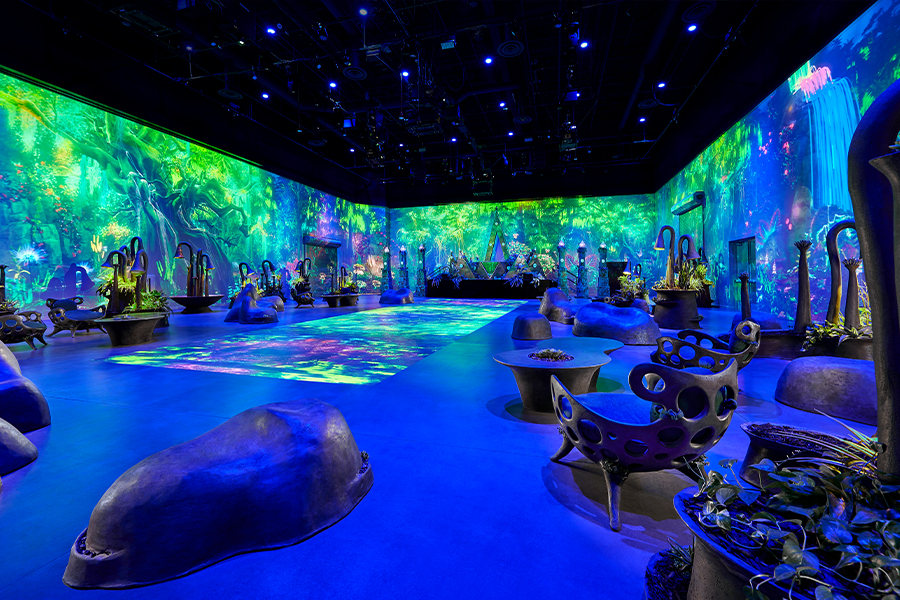
While these “Experience Districts” may sell merchandise, food and beverage and other products, experiences are the main event. In the same way that the malls of the past played host to branded stores, these are spaces for a revolving series of curated experiences.
Examples of Experience Districts I’ve noticed include:
- AREA15: branded an “experiential bazaar”, AREA15 is a 200,000 square foot mall in Las Vegas featuring dining options, art spaces, and live performance, as well as lots of curated retail.
However, the magic ingredient is experiences, with a rotating schedule of events and an “anchor experience” tenant in Meow Wolf, who launched their Omega Mart here in 2021.
Current experiences on offer include: the new Radiance Program, a wellness program featuring a roster of immersive experience exploring mind, body and soul. O Keeffe: One Hundred Flowers, an immersive exhibit of the artist’s work following in the footsteps of the immersive Van Gogh and Klimt shows that previously toured here. Plus offerings from Lost Spirits Distillery, Illuminarium, Dueling Axes, Fire Iron Golf, and Virtualis VR.
A second AREA15 is set to open in Orlando, Florida in 2024. (For ten experiential rules we think you can learn from AREA15, check out What’s Happening In Vegas Won’t Stay in Vegas This Time.)
- Outernet: billing itself as “an immersive entertainment district in the heart of London where communities come together to enjoy culture in breathtaking new ways”, Outernet recently opened on Tottenham Court Road and is currently hosting Pixel Artworks’ mindfulness experience, Room To Breathe.
“We’re building the largest capacity entertainment venue in London since the 1940s with the highest resolution screens of anywhere in the world” says Philip O’Ferrall, President and CEO.
Outernet’s Now Building and Now Trending public galleries feature giant Ultra-HD screens, and there’s also a 2,000-capacity music venue, HERE, and dive bar, The Lower Third, as well as further music and retail spaces throughout the district.
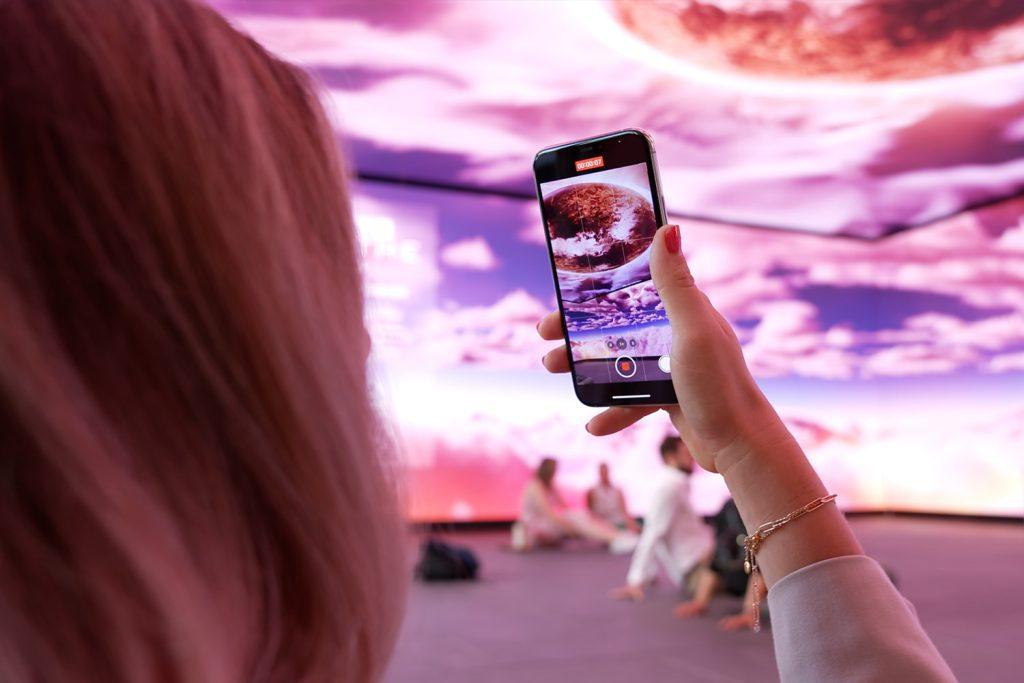
- Lost: keen to make the most of the abandoned spaces left by the closure of our malls and main streets, Secret Cinema founder Fabien Riggall is set to transform Croydon’s historic Allders building into an arts and entertainment space.
The former department store will be transformed into a multidisciplinary venue and community hub celebrating art and entertainment called Lost.
“The aim of Lost is to reimagine the exhibition and distribution of physical experiences by designing a new format of entertainment,” Riggall said. “A disruptive force set to regenerate forgotten high streets and subvert the current system, it will build a new subculture uniting local and international artists together in a unique community on a global scale.”
Riggall hopes the project will generate thousands of job opportunities, turning disused high streets and shopping centres into “magical environments” that bring people together.
- Cosm: experiential media and immersive tech company Cosm is to open its first public venue in Hollywood Park. The location will be the first venue of its kind to utilise Cosm’s domed and compound curved LED tech.
Forming part of Hollywood Park’s retail district, the venue will showcase a 26.6-metre diameter LED dome in a 65,000-square foot facility that can hold up to 1,700 guests.
Programming at the venue will include live sports and entertainment, experiential events, and immersive art and music. Designed by HKS, construction is due to begin on the site this autumn.
- OcV!BE: the owners of ice hockey team the Anaheim Ducks have got the green light to build a US$4 billion entertainment district around the Honda Center in Anaheim.
Spearheaded by Henry and Susan Samueli, the entertainment district will include a stadium, 5,700-seat concert venue, shops, 35 restaurants, two hotels, offices, 1,500 apartments and 20 acres of park space.
Spokesperson Brian Myers says, “The dream is not just an incredibly designed and engineered transit-oriented master plan community where the residents of Anaheim and surrounding regions can live, work and play. It’s to create a thriving community that is inclusive to everyone, sustainable at every level, and where the sense of purpose transcends its sense of place.”
We’ll be keeping an eye on this trend as it evolves and adding new examples of the two types of experiential retail. If you have anything to add, let us know over on My WXO…

